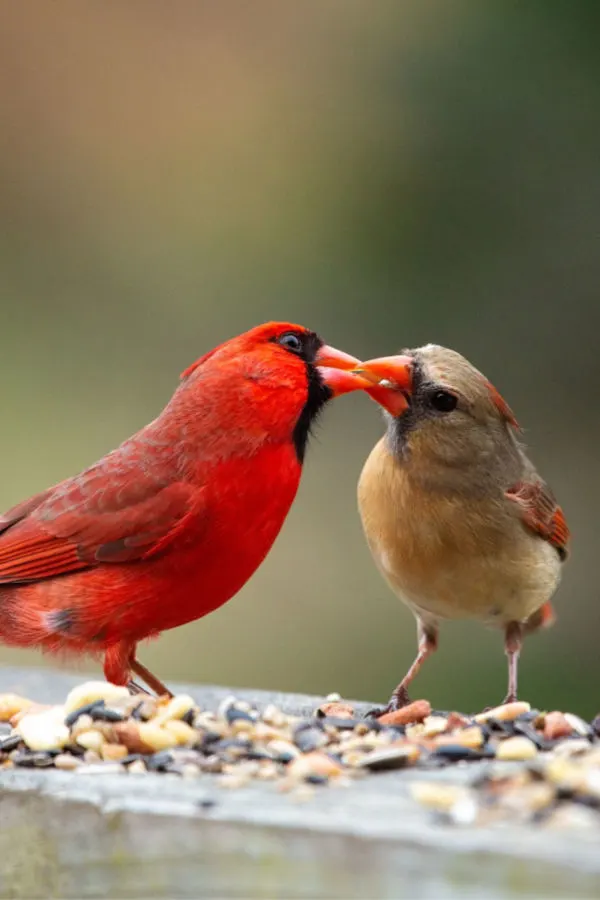If you love feeding birds but are tired of the ever rising cost of commercial feeds – it’s time to make your own homemade bird feed! Not only can it help you to feed your feathered friends with far less cost, you can also make sure they are getting some of the most nutritious food around.
Like everything else these days, feeding birds is getting more expensive with each passing day. Many commercial bird feeds are now hovering around $10 per pound or more. And that’s if you are buying larger bags or in bulk!
What makes it even harder is that many commercial feeds contain a high percentage of filler ingredients. Fillers that don’t provide much at all in the way of nutrition, fat or calories to birds. And that can be extremely important to a bird’s diet. Especially ones trying to survive in the winter!
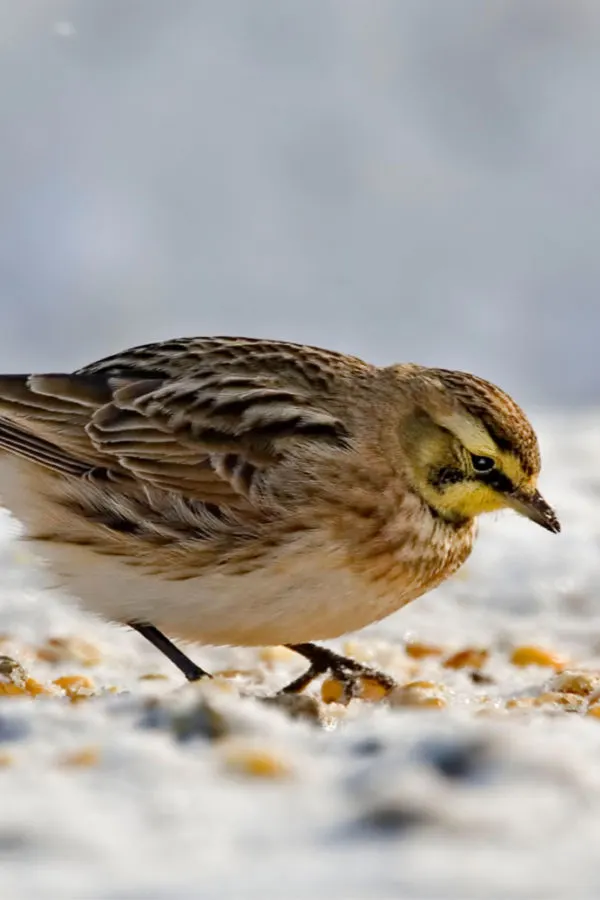
Overwintering birds such as cardinals, blue jays, starlings and many other birds all require more calories and fat content in their diet in order to stave off the frigid temperatures of winter. Unfortunately, many commercial bird feeds simply contain too many fillers that don’t give birds what they need the most.
The good news is that with a few simple ingredients, you can create your own food quite easily. And, far less expensively too. Even better, if you can find the ingredients in bulk, you can lower your bird feeding costs even more.
How To Make Homemade Bird Feed With Ease
A good bird feed should consist of at least 3 nutritious ingredients. Having a variety not only attracts more birds to your feeder, but also allows for different dietary needs to be met from the assortment of ingredients.
Just like humans, birds need to have a bit of balance in their diet for optimum health. Some ingredients should provide a higher fat content, while others need to add protein and fiber. With all of that in mind, here is a look at how to create your own homemade bird feed this year – and keep all of your bird feeders full without breaking the bank!
The Best Ingredients – Getting The Most Bang For Your Buck!
There are of course hundreds of seeds and excellent food sources that are great for feeding to birds. But when it comes to giving them a nutritious feed and stretching your hard-earned dollars, some are far better choices than others.
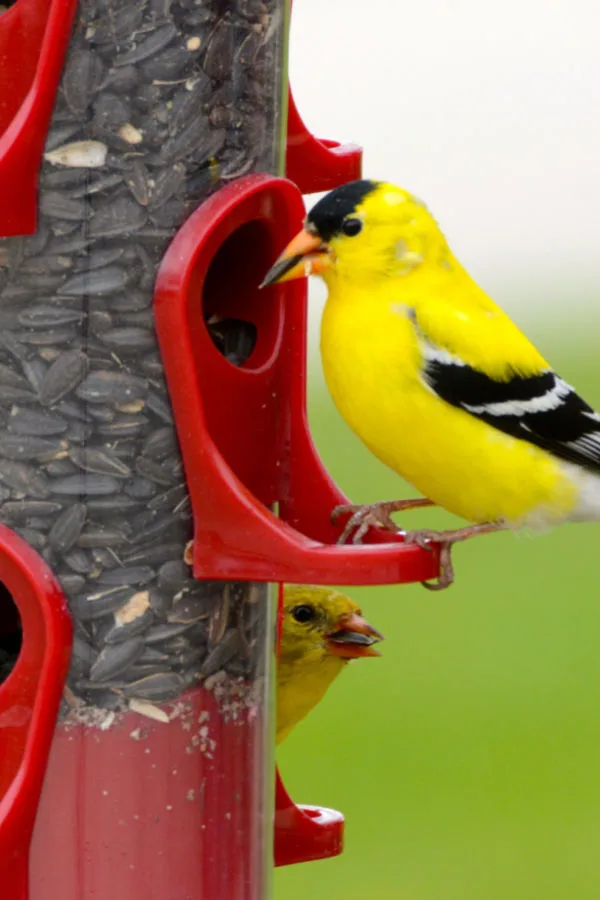
For instance, dried fruit and safflower seeds are both wonderful sources of nutrition for birds. But both also happen to be almost prohibitively expensive. A fifty pound bag of safflower seeds can easily run in excess of $50. And dried fruit, well – it’s fruit, and you know how expensive that can be!
So what are some of the best economical and yet nutritious choices? Here are four top choices for feed that can be combined to make an affordable and yet highly power-packed bird feed mix:
- Black Oil Sunflower Seeds
- Cracked Corn
- Peanuts
- White Millet
Black Oil Sunflower Seeds – How To Make Homemade Bird Feed
With a fat content that exceeds 25% and a high content of fiber and protein, black oil sunflower seeds are an excellent choice for your homemade feed. Even better, most birds love them, so waste is never an issue!
Although all types of sunflower seeds are nutritious, it is hard to beat black oil sunflower seeds. They can be fed to birds in or out of the shell, or in combination to feed a few of the smaller birds who find it difficult to get to the nuts that are still in the shell.
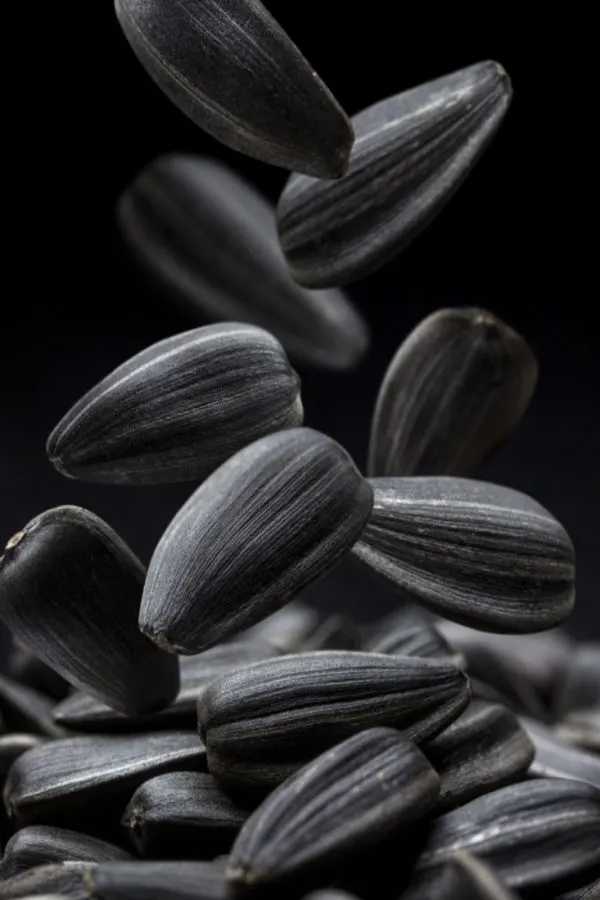
Many home bird feeders will mix a few different varieties of sunflower seeds in with a portion of Black Oil sunflower seeds to really give a good variety to their birds. Sunflower seeds have gone up a bit in the last few years, but they are still an incredibly value priced food for birds – especially when you purchase in bulk.
Cracked Corn – How To Make Homemade Bird Feed
When it comes to adding fiber and protein to a bird’s diet, cracked corn is a big winner. It makes a great partner when mixed with black oil sunflower seed, providing a full energy source for birds.
When purchasing corn for your feed, always opt for cracked corn vs. whole corn. Whole corn will not attract very many small birds and is much harder for all birds to consume. Cracked corn can usually be found at local feed stores for under $20 for a 50 pound bag.
White Millet – How To Make Homemade Bird Feed
When it comes to bird seed and feed, there are two ingredients that often get confused – millet and milo. Although they are close in name and size, they are completely different as a bird feed. One thing is for sure, knowing the difference can certainly help when it comes to giving your birds the feed they love and want.
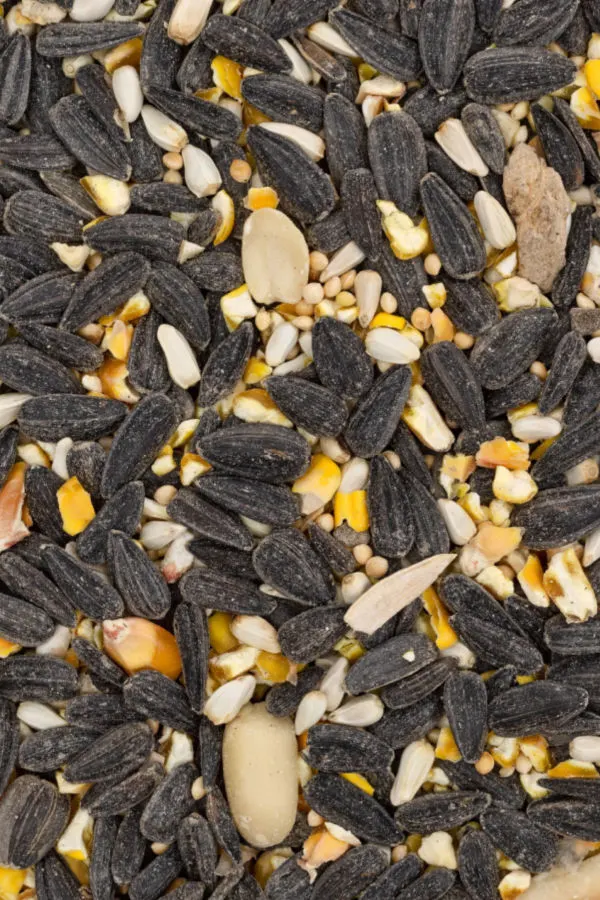
Millet and milo are both small round seeds that often fall to the ground in feeders. Millet is a wonderful source of protein, calcium, magnesium, and phosphorus for birds. As an added benefit, it is also quite rich in oil as well.
Milo on the other hand is a filler for bird feeds and quite honestly, most birds simply won’t eat it. It does not have near the nutritional value of millet, and it usually ends up wasting away on the ground. If you do happen to purchase your bird’s feed, always make sure that milo is not one of the main ingredients.
Millet on the other hand will attract birds in droves. Birds that feed on the ground (thrashers, doves, cardinals, and sparrows to name a few) love to feed on millet. Take note that there are two types of millet as well, red and white. Although both are good for birds, birds seem to love and prefer white millet by far. Product Link: Backyard Seeds White Millet Bird Seed
Peanuts – How To Make Homemade Bird Feed
Last but not least are plain old peanuts! Peanuts are an incredible source of nutrients for birds. Not only are they high in oil and fiber, but they are a great source of protein for birds too.
When adding peanuts to your homemade bird feed, you can feed them with or without the shells. In fact, many avid feeders of birds love to mix their homemade feed with both types since many birds prefer them with the shells on while other species find it much easier to simply consume the nuts.
Peanuts can often be found quite inexpensively when purchased in bulk at feed stores. You will have to be careful though, they can also attract quite a few squirrels and chipmunks to your feeding area as well.
Add A Bit Of Dried Fruit – How To Make Homemade Bird Feed
Although dried fruit can be expensive, if you can add a little now and then it can really help to bring in the birds! Raisins are a good option and can often be found on the less expensive side of dried fruit, so if you come across a good deal, pick some up and add it to your mix. Your birds will certainly thank you for the treat!
One note of caution with raisins, both grapes and raisins can be extremely toxic to dogs, so if you have dogs or have dogs coming into your yard, it is best to leave them out.
Here is to making your own homemade bird feed, and to keeping our little flying friends fed through the cold and barren winter months! Happy bird feeding – Jim and Mary.
Jim and Mary Competti have been writing gardening, DIY and recipe articles and books for over 15 years from their 46 acre Ohio farm. The two are frequent speakers on all things gardening and love to travel in their spare time.
As always, feel free to email us at thefarm@owgarden.com with comments, questions, or to simply say hello! You can sign up for our free email list in the subscribe now box in the middle of this article. Follow us on Facebook here : OWG Facebook. This article may contain affiliate links.


